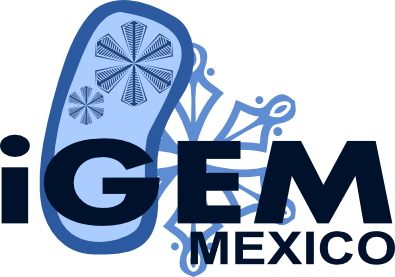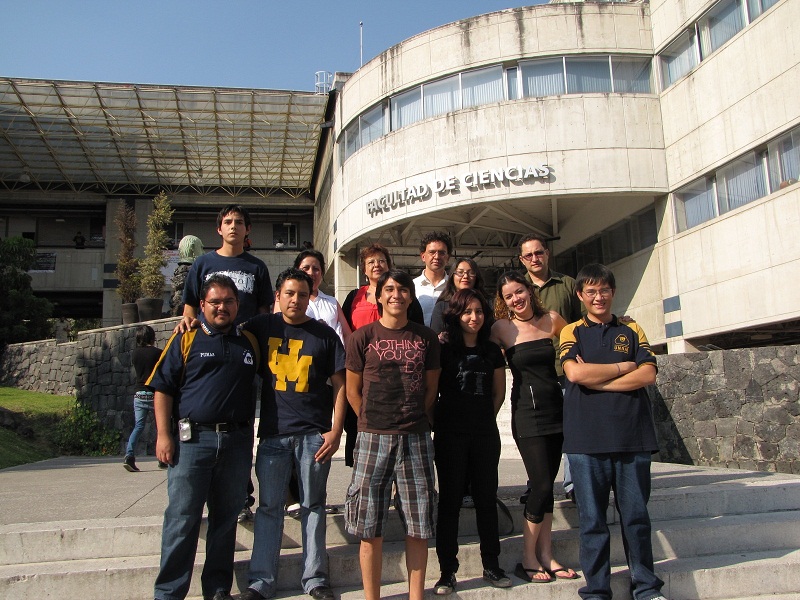|
|
| (46 intermediate revisions not shown) |
| Line 1: |
Line 1: |
| | {{Mexico-UNAM-CINVESTAV-HEADER}} | | {{Mexico-UNAM-CINVESTAV-HEADER}} |
| - | {{Mexico-UNAM-CINVESTAV-COUNTDOWN}}
| |
| | | | |
| - | ==Intro ==
| |
| | | | |
| - | Taking the idea of Arthur C. Clarke`s Novel 2001, Odissey of the space, it would be possible to find at least one solution of preserving living tissues from freeze damage. This solution could be taken from nature examples on which many species have envolved to avoid freezing damages,also this could be applied to other known problems in human activities, such like crops, preserving cells, even oven tissues.
| + | [[Image:Mx-Igem-cold-big.png|300px|center]] |
| | | | |
| - | We are far from freeze living people but we want to acclimate organisms to cold environments and we propose to follow the next steps:
| + | <center> '''A very cool ''E. coli''''' </center> |
| | | | |
| - | *Characterization of living systems at low temperatures.
| |
| - | *Design a Crio-chassis to keep bacteria at freezing temperatures.
| |
| - | *Design an Antifreeze protein that we could use on our system.
| |
| - | *Build a synthetic regulatory network that responses to low temperatures.
| |
| - | *Create a complete kit of parts for low temperatures and freeze.
| |
| | | | |
| - | Our project is quite versatile, we think we can use it to solve a lot of issues on technological, scientific, medical and agronomy,
| + | [[Image:abstract.jpg]] |
| | | | |
| - | ==Project==
| |
| - | In our project, we’re trying to combine both of the strategies that nature have developed to overcome the problem of cell and tissues freezing. First we organize a cold regulation system at transcription and transduction level of a constitutive gene that Escherichia coli uses to cold shock response at 15 ºC.
| |
| - | Also we addition an antifreeze protein that helps the cell to not allow the water under freezing process to create strong hydrogen bounds and maintain a vitrification process over a crystallizing process. On that way the cytoplasm and the cell membrane did not be damage at low temperatures.
| |
| - | This both strategies may create new biobricks that can function as a “freeze kit” to have a chassis cell for laboratory problems like the criopreservation in strains of Escherichia coli and else.
| |
| - | Even we are trying to overcome other human issues like the maintenance of plants and crops that have to survive the cold weather in countries like Canada and USA, northern european countries, and Russia between others.
| |
| - | Develving into the topic of the cold shock system, we found some deep questions that are not solve at all. That’s why we take four constructions to prove the different kind of regulation that the system can allow.
| |
| - | *At first we took the promoter with all the parts involved, from the promoter polymerase-binding zone, to the Downstream Box that is inside the protein.
| |
| - | *In a second construction we took all the regulations system without the promoter to define if another promoter that is not the CspA can be regulated with the freeze system.
| |
| - | *Third we also have the CspA promoter alone so we can put it in another gene and see if this can function at low temperatures.
| |
| - | *For a final construction we took the Cold box, the UTR region and the Shine Dalgarno sequence with the exception of the Downstream Box and the promoter because we are not sure if having two methyonines in the beginning of the protein shall cause problems to the traduction system of the ribosomes even if it’s an important point of regulation in the freeze system. Despite we found in some papers that the freeze system could be express over this conditions, we are trying to confirm this and to valuate which construction is better.
| |
| - | To make these constructions we use primers that allow us to make PCR and obtain the different pieces of the cold shock promoter. These primers have been made with the specifics requirements, so they have areas of cutting restriction enzimes that the IGEM request. This allow us to cut and paste anywhere we want as a biobrick ; with this we also can make the constructions with the AFP that we want and express the protein at low temperatures so it cannot denature as typically does.
| |
| - | To account quantitatively the best promoter that response to cold shock we pasted the four constructions before the GFP gene so we could see which one expressed more GFP at 15 ºC and determine which one is greater.
| |
| | | | |
| - | ==AFP==
| + | |
| | + | |
| | + | We begin by proposing a biosynthetic construction that enables ''Escherichia coli'' to produce an antifreeze protein, (AFP), at less than 15 degrees Celsius. This protein prevents ice crystal formation in the cell, which in turn allows survival at very low temperatures. |
| | + | We develop a switch by adapting the cold-shock ''E. coli'' operon with AFP from a generus of fishes (''Zoarces sp.'') using a positive feedback circuit. A very important potential application we are interested in is the use of AFP to designing systems helping crops to avoid potential damage from frosts. There are other possible important applications in tissue and organ preservation. |
| | + | |
| | + | [[Image:Grupo.jpg|700px|center|]] |
| | + | |
| | + | |
| | + | |
| | + | {{Mexico-UNAM-CINVESTAV-FOOTER}} |




 "
"







